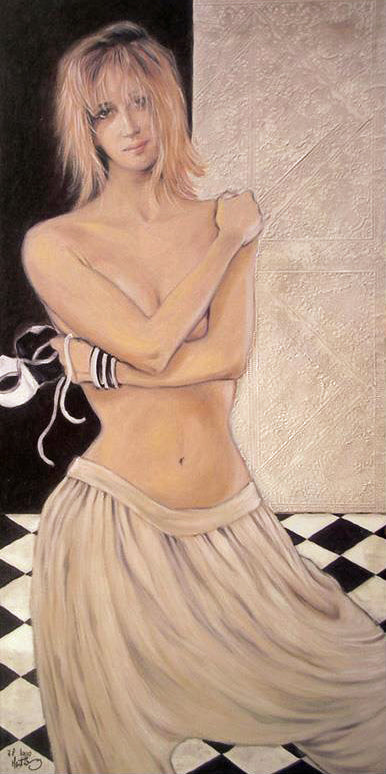Collection:
Jean-Paul Loppo Martinez Biography and Art Gallery Collection
Jean-Paul Loppo Martinez is a French painter born in Brittany, March 14th, 1952. From the time his young hands could hold a writing implement Martinez was creating art. At the age of eight he studied at the 'Experimental Art School' in Lorient, followed by the 'Beaux arts' in Versailles, 'Studio Grappin’ for anatomy at Beauvais and the 'L’ecole Superieure Estienne des Arts’ in Paris. At the age of 16 Jean-Paul Loppo Martinez was accepted to the Estienne School of Artistic and Industrial Graphics in Paris, and found his niche in engraving. Before devoting himself exclusively to his own painting, Under the direction of engraver and former director of the Maeght studios, Robert Dutrou, he collaborated as a master engraver in printmaking for Picasso, Miro, Bellmer, Kim Tchang Yeul, Rodo-Boulanger, Bernar Venet, Robert Dutrou,and Max Pappart among many others. He found himself inspired in their presence of their greatness, and it didn't take long before Jean-Paul Loppo Martinez had easily established himself as an acclaimed engraver and artist.
Driven to discover, Jean-Paul Loppo Martinez also found success as a musician, producer and scriptwriter, living by the self-proclaimed philosophy that an artist need to possess not only cultural, but also creative maturity. But it wasn't until Martinez met his partner in life and art, Cecile, in his early forties that his true breakthrough in creative maturity transpired, and his philosophy and love of life could truly be expressed in his art. In 1996, freshly inspired, Martinez began working with Cliff Kiyohara in Japan and quickly thereafter was able to present his works as paintings, fashion designs and accessories, drawings, art books and furniture.
Jean-Paul Loppo Martínez's lifelong passion for the theme of the woman, the passage from design on canvas has bridged into design of accessories. The sincerity in the search to transpose his emotions, as well as the assertion of his expression and style are the very precise criteria guiding the strength of an artist. Two major art movements have affected and motivated his search: Post Impressionism and Fauvism on one hand and Art Deco on the other. Revolving around 'Drama’ and 'Symbolism of sign’, his art expression has a very simple rationale attaching palpable emotions of life to an inferred scene insinuated by symbols and colors. Choosing figurative art as his means of expression he lets the onlooker share his dreams preserving the spirit of those infused in his world.
 Vendor:Noir et Blanc - Limited Edition Giclee on Textured Board by Jean-Paul Loppo MartinezArt Deals
Vendor:Noir et Blanc - Limited Edition Giclee on Textured Board by Jean-Paul Loppo MartinezArt Deals


